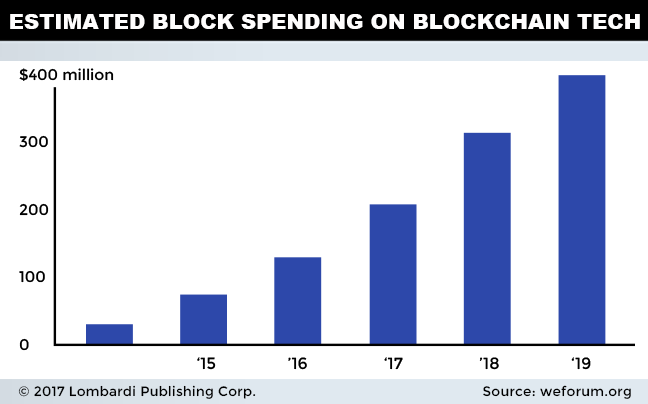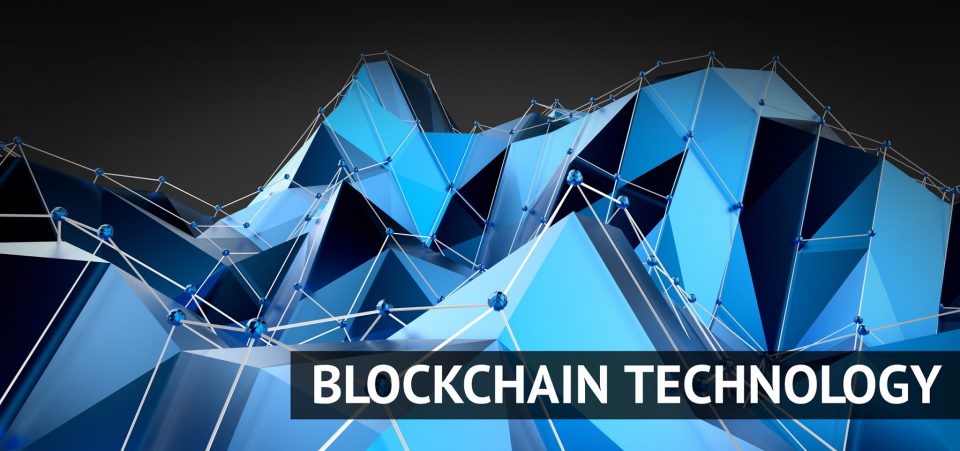Blockchain Technology: The Public Face Is a Currency, But Its Utility Is So Much More
Many people around the globe are starting to familiarize themselves with Blockchain technology as it gains popularity around the globe. Blockchain is on the cusp of making historic inroads in the way we conduct business and pay for it. So, how does the blockchain technology work?
Major initiatives are using the technology with success, and nations around the world are recognizing it as currency. The golden age of blockchain has arrived, yet most people still don’t understand what it actually is, and why it’s changing society.
How Does the Blockchain Work?
The Bitcoin network is an open-source public ledger called the “blockchain.” This ledger contains all transactions ever processed, allowing Bitcoin users to verify and validate every transaction. Purchases or sales are protected by digital signatures assigned to the sending addresses, allowing users full control over sending bitcoins from their own Bitcoin addresses. Bitcoin is widely considered among the most secure of the dozens of cryptocurrencies in existence.
Let’s focus on how blockchain technology applications work for the average person as a currency. If person “A” wants to send money to person “B,” the transaction is sent to the counterparty represented as a “block.” This block of information is then sent to every computer database on the blockchain network (decentralized, of course). Those in the network can then prove that the transaction is valid if it conforms to a certain methodology (previously agreed upon by the network). Once approved, the block of proven information can be added to the network and is verified as valid. The money is then transferred to person “B.” There are no middle agents or barriers, and it is cost-efficient.
The technology isn’t just about money. It can work for almost every type of transaction involving value, such as property transfers and legal contracts. It can be used to wire money in near-instant time instead of waiting on “hold” from the bank as they verify your details. It can also reduce fraud, because every transaction is recorded and distributed on a public ledger for anyone to see. It’s impossible to “trick” the system, which is much too broad to be corruptible (no single authority).
In fact, an important component of blockchain technology is its ability to support something called “smart contracts.” This is a software code representing a defined business logic. Smart contract programs can be designed to communicate with other smart contracts and send data back and forth. For example, smart contracts could represent the terms and conditions of legal contracts. The possibilities are endless.
What Is Blockchain Technology?
In a nutshell, a blockchain network is a decentralized system for the exchange of business assets. It uses something called a “distributed ledger” for recording the history of asset transactions between network members. These transactions are conducted using a consensus mechanism agreed upon by network members, as opposed to third-party financial rules and regulation. Although the concept of a blockchain network was popularized by Bitcoin, using the blockchain as money (otherwise known as cryptocurrency), is far from its only utility.
Picture a spreadsheet of information that is duplicated thousands of times across a network of computers. Each time a transaction is made, this network updates the spreadsheet information for everyone on the network to view. This is a very basic explanation of blockchain technology.
Since the information held on a blockchain is shared (not copied) and decentralized, it presents a number of obvious benefits. No single actor “owns” the information per se, so record-keeping becomes transparent and verifiable. Information can be updated by all parties in real time, instead of being “locked out” by a single actor.
For example, the traditional way of sharing information involves one party updating a document (information), and then passing it on to another counterparty for revisions. The two counterparties must take turns updating the database before the other party can make their own revisions. This is how banks maintain money balances and transfers; they briefly “lock” access until they are done updating their records. With blockchain technology, all this information becomes shared and communicable at all times, saving time and creating enhanced efficiency with information transfers.
How Would Blockchain Technology Impact Business?
The previous point is exactly why the biggest financial institutions are so excited about the technology. It promises to yield more accurate record-keeping in a much more efficient manner. It may deeply cut the need for back-office staff (often the biggest cost drivers for banks) significantly.
The Depository Trust & Clearing Corporation (DTCC) recently announced that International Business Machines Corp. (NYSE:IBM) and select partners will re-platform DTCC’s “Trade Information Warehouse” (TIW) using blockchain technology. If enacted, this distributed ledger technology could revolutionize the way that back-office trades are cleared and processed in the financial markets. The DTCC is the world’s largest credit derivatives clearinghouse, servicing approximately 98% of all transactions in the global marketplace. (Source: “DTCC Partners With IBM, Startups For Blockchain-Based Credit Default Swaps Solution,” Forbes, January 9, 2017.)
Major stock exchanges like the Japan Exchange Group, operated by the Tokyo Stock Exchange (TSE), are getting in on the action as well. They have approved the use of blockchain technologies like Bitcoin as a core trading infrastructure. Similar technology is currently in use or is in the testing phase in stock exchanges in Australia, Southeast Asia, and the NASDAQ. Even the International Monetary Fund (IMF) is discussing the possibility of piloting a blockchain clearing system, although nothing is in the works yet. The fact that there’s even a conversation and a need to issue a press release denying its plausibility says quite a lot.

When Was Blockchain Introduced?
Although Bitcoin founder Satoshi Nakamoto gets most of the credit, the first instances of cryptography-secured blockchains were described almost two decades earlier by Stuart Haber and W. Scott Stornetta. They were the early trailblazers in the field.
Blockchain technology, as the public has known it, first came into public view on January 3, 2009 with the advent of Bitcoin. The public ledger for Bitcoin was started on that date at 18:15 UTC, presumably by Nakamoto. The first block is known as the “genesis” block, since it was the first in existence. The first recorded transaction in the genesis block was a single transaction rewarding 50 new bitcoins to its founder.
The first official transaction of Bitcoin took place in block 170, between Satoshi and cryptocurrency enthusiast Hal Finney. With that, a new era was born.
What Is Blockchain Banking?
In order to perform transactions on the blockchain, you need a “wallet,” which is a program that can store and exchange bitcoins. Each wallet is protected by a special cryptographic encryption which uses a unique pair of keys; one private and one public. The public key is like your e-mail account and the private key is like your password to access your e-mail account. Each is unique to the user. Bitcoin is like digital cash, in which each transaction is in full view.
Blockchain technology is enabling entry into markets that have traditionally been dominated by banks. Banks are seeing an increase in competition from non-banking players in mobile payments and lending, and blockchain is likely to intensify such competition. It will reduce technological barriers for various digital products today commonly available at the bank.
How to Invest in Blockchain Technology
Major exchange-listed blockchain technology companies that deal exclusively with blockchain are few and far between. There are several large multinational companies, however, that are developing blockchain solutions to improve business efficiency and build out the blockchain infrastructure for commercial use. The leaders include International Business Machines, Microsoft Corporation (NASDAQ:MSFT) and Intel Corporation (NASDAQ:INTC). For investors craving exposure to blockchain in a minimalist and secure way, these companies may be a good starting point.
For higher risk/reward profiles, there’s no lack of micro-cap stocks to invest in. Unfortunately, most are not considered investment-worthy, lacking the revenue and disclosure to be considered anything other than highly speculative. In North America, these blockchain-themed stocks generally trade on the over-the-counter (OTC) or pink sheets exchanges, or the Toronto Venture Exchange (TSXV) in Canada.
There is anticipation that a new exchange-traded fund (ETF) will be introduced in the market shortly. After initially splashing cold water on the idea, the U.S. Securities and Exchange Commission (SEC) is reviewing its decision to disallow a new Bitcoin-tracking ETF to trade on the exchange. The proposed derivative by twins Cameron and Tyler Winklevoss would enlarge the market greatly, as millions of Americans own brokerage accounts, but few possess Bitcoin exchange accounts or wallets. Stay tuned; it’s just a matter of time before an ETF comes to pass. (Source: “Bitcoin marches towards all-time high as SEC gives potential second shot to Winklevoss ETF,” CNBC, April 26, 2017.)
Another cryptocurrency, Ethereum (ETH), is quickly making inroads as a formidable challenger to Bitcoin’s market dominance. The SEC has quietly begun consultations on whether to approve an ETF for Ethereum. This comes on the heels of a meteoric rise in Ethereum’s price and trading activity, which has mimicked Bitcoin in scope. (Source: “The SEC is Now Weighing an Ethereum ETF Proposal,” CoinDesk, April 25, 2017.)
But, for now, your best bet for direct cryptocurrency exposure is through of the blockchain exchanges.






